


AUTHORS: Stratton SJ, Rogers C, Bricket K, Gruzinski G
Published in the American Journal of Emergency Medicine
May, 2001; Volume 19, Number 3, pages 187-191
Oooh!: I just (February, 2004) obtained this article in PDF format!
So, if you're going to print it out, you'd BEST print it from THE PDF FILE:
Factors Associated With Sudden Death of Individuals
Requiring Restraint for Excited Delirium

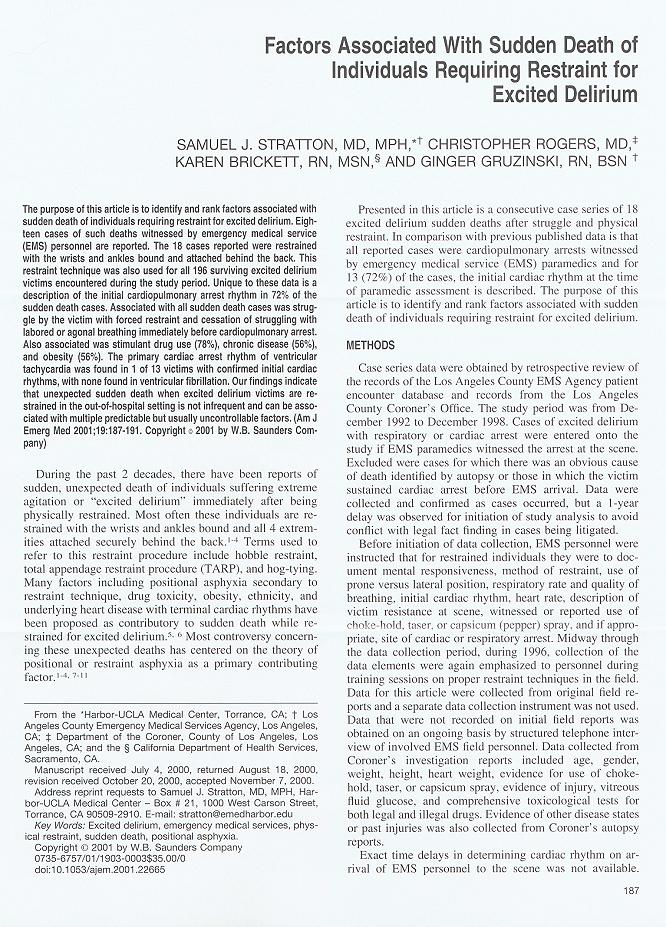
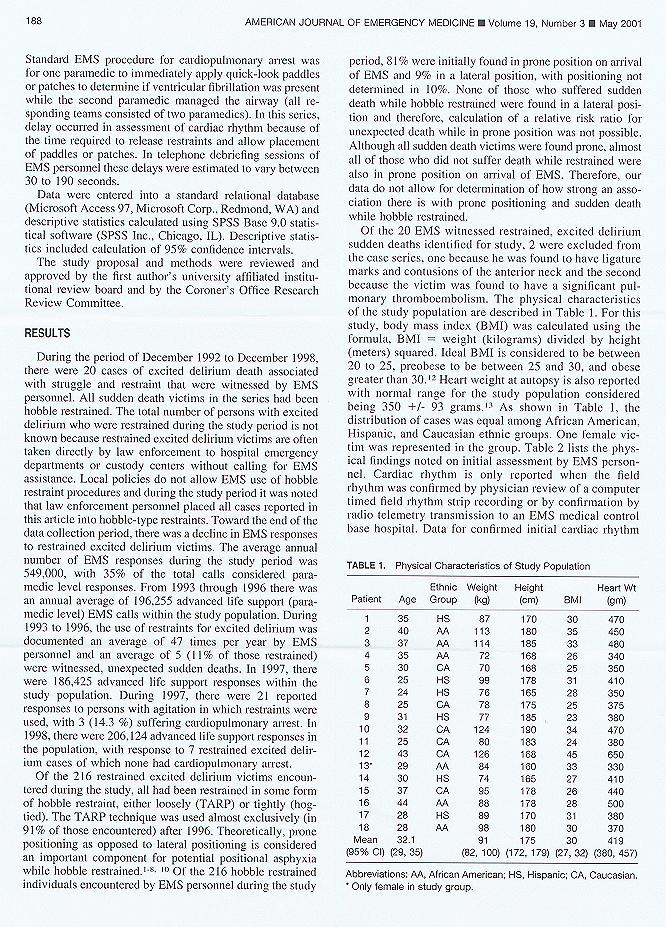
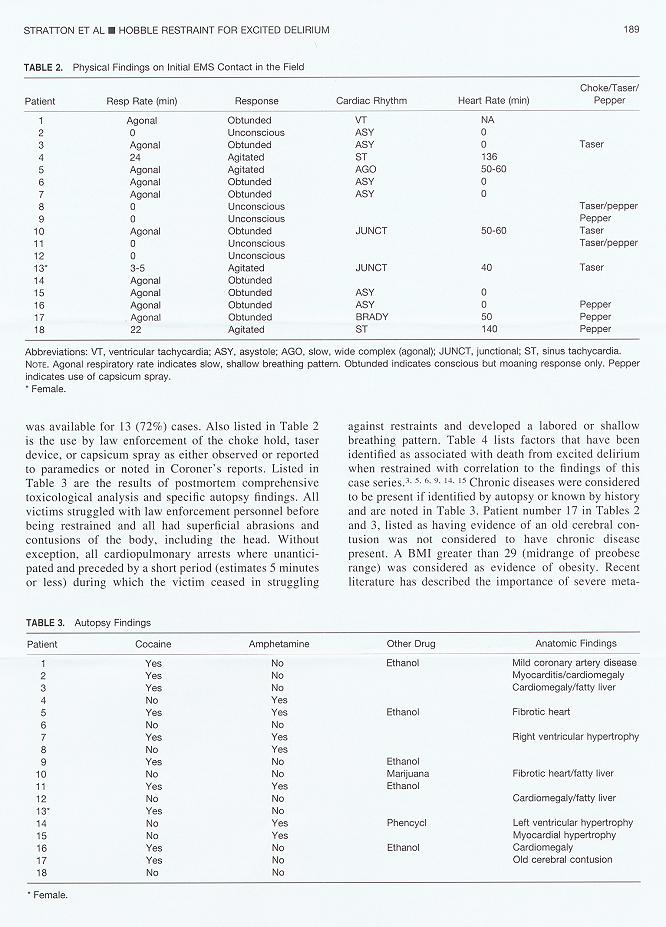
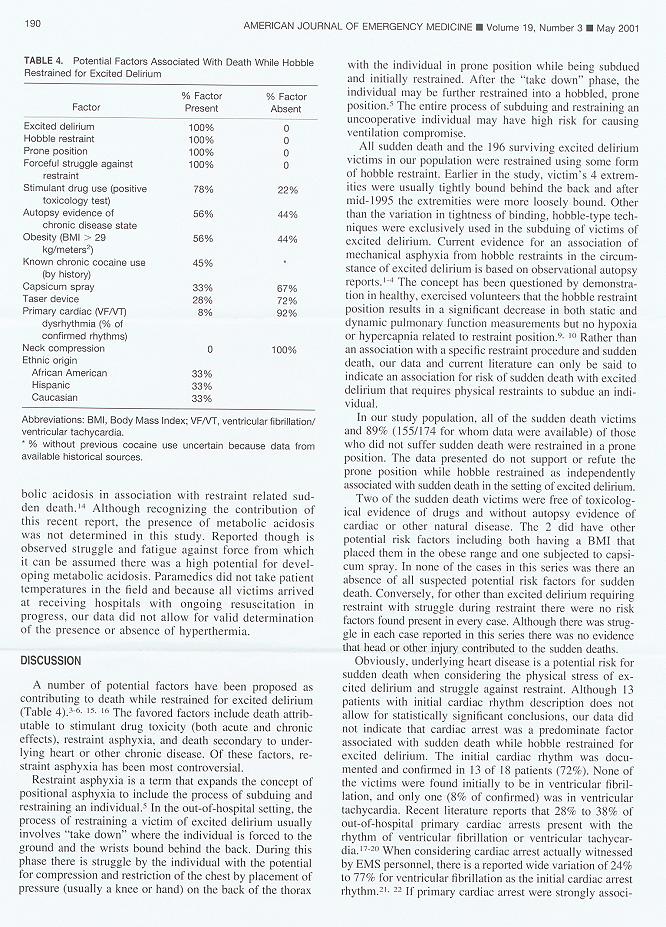
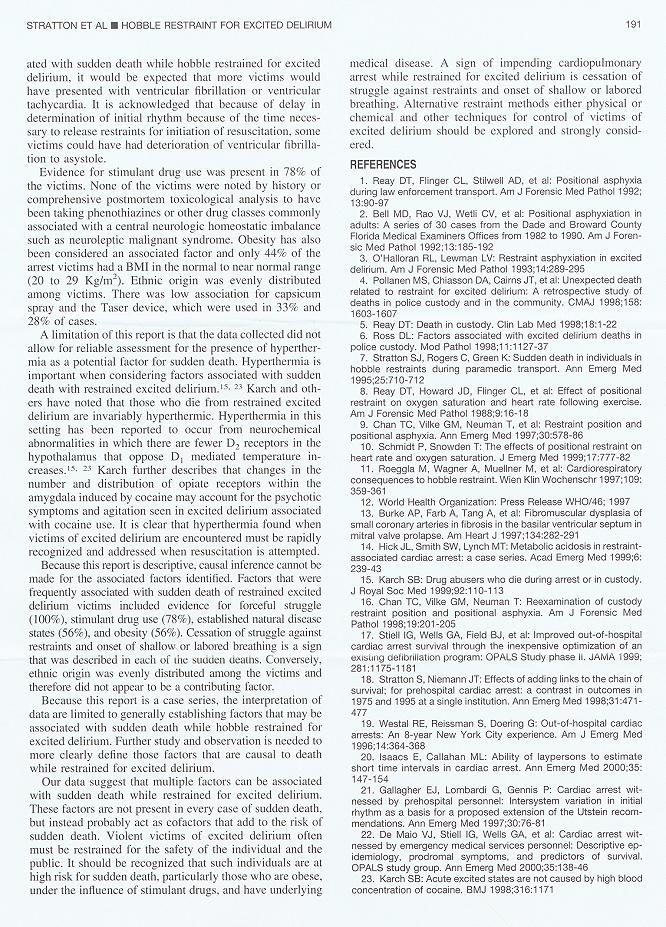

Above REFERENCES that are posted in the Restraint Asphyxia Library:
Green Numbers in parenthesis are "pending" =1, (2), 3, 4, 5, 6, 7, 8, 9, (10), 11, 14, (15), 16, (23).
At this writing (July 30, 2002), I'm working to get them and post them.
Thus, they may be in the Library when you read this.

IMPORTANT POINTS Identified in This Study:
"18 excited delirium sudden deaths after struggle and physical restraint. ... all reported cases were cardiopulmonary arrests witnessed by emergency medical services (EMS) paramedics and for 13 (72%) ... the initial cardiac rhythm at the time of paramedic assessment is described. The purpose ... is to identify and rank factors associated with sudden death of individuals requiring restraint for excited delirium."I'm so happy that this kind of a REAL-LIFE study has been done. This is the kind of research that Chan et al ought to be doing (as opposed to studying healthy people who never would be restrained in the first place)!

"...delay occurred in assessment of cardiac rhythm because of the time required to release restraints and allow placement of paddles or patches. ... these delays were estimated to vary between 30 to 190 seconds."This is an interesting finding. Obviously, supinely-restrained individuals would not have suffered ANY kind of delay to allow placement of paddles or patches – and they could have remained restrained during the process of assessment and resuscitation. Then, again, No One has ever identified a case of "sudden custody death" occurring in an individual who was supinely restrained!!!
My only "criticism": if the medics participating in this study had thought to, they COULD have applied paddles and/or patches immediately upon the restrained individual being rolled to his side – WHILE the restraints were being removed. Obviously, patient movement during restraint removal may have distorted the EKG picture. But, at least the patient wouldn't have had to wait up to "190" seconds to have his cardiac rhythm determined.

"In our study population, all of the sudden death victims and 89% (155/174 for whom data were available) of those who did not suffer sudden death were restrained in a prone position."I wish that Stratton et al had provided this point with greater emphasis! However, at the time of the study's inception (1992), all of us ("us" being people honestly interested in learning the truth about this subject) were still unaware of the greater part played by forceful-prone-restraint than by hobble restraint.

"If primary cardiac arrest were strongly associated with sudden death while hobble restrained for excited delirium, it would be expected that more victims would have presented with ventricular fibrillation or ventricular tachycardia."Yet, another important point identified by this study – one that supports previous Restraint Asphyxia findings: NONE of the victims were found in ventricular fibrillation. "Regular" asphyxial deaths have long been recognized as being notorious for not producing ventricular fibrillation (the otherwise-most-common rhythm) prior to death. The fact that ventricular fibrillation was not found in any of these victims entirely supports the basic theories of restraint asphyxia pathophysiology. Indeed, I was very surprised at the documentation of 1 ventricular tachycardia, and 2 supraventricular tachycardias, documented in this study group of 18 individuals! I can only assume that, the 2 SVT individuals "might" have been resuscitated ... but, for some unknown reason, were not.
IN SUMMARY:
KUDOS to Stratton et al! This is a great study, and very helpful.


 Email Charly at: c-d-miller@neb.rr.com
Email Charly at: c-d-miller@neb.rr.com